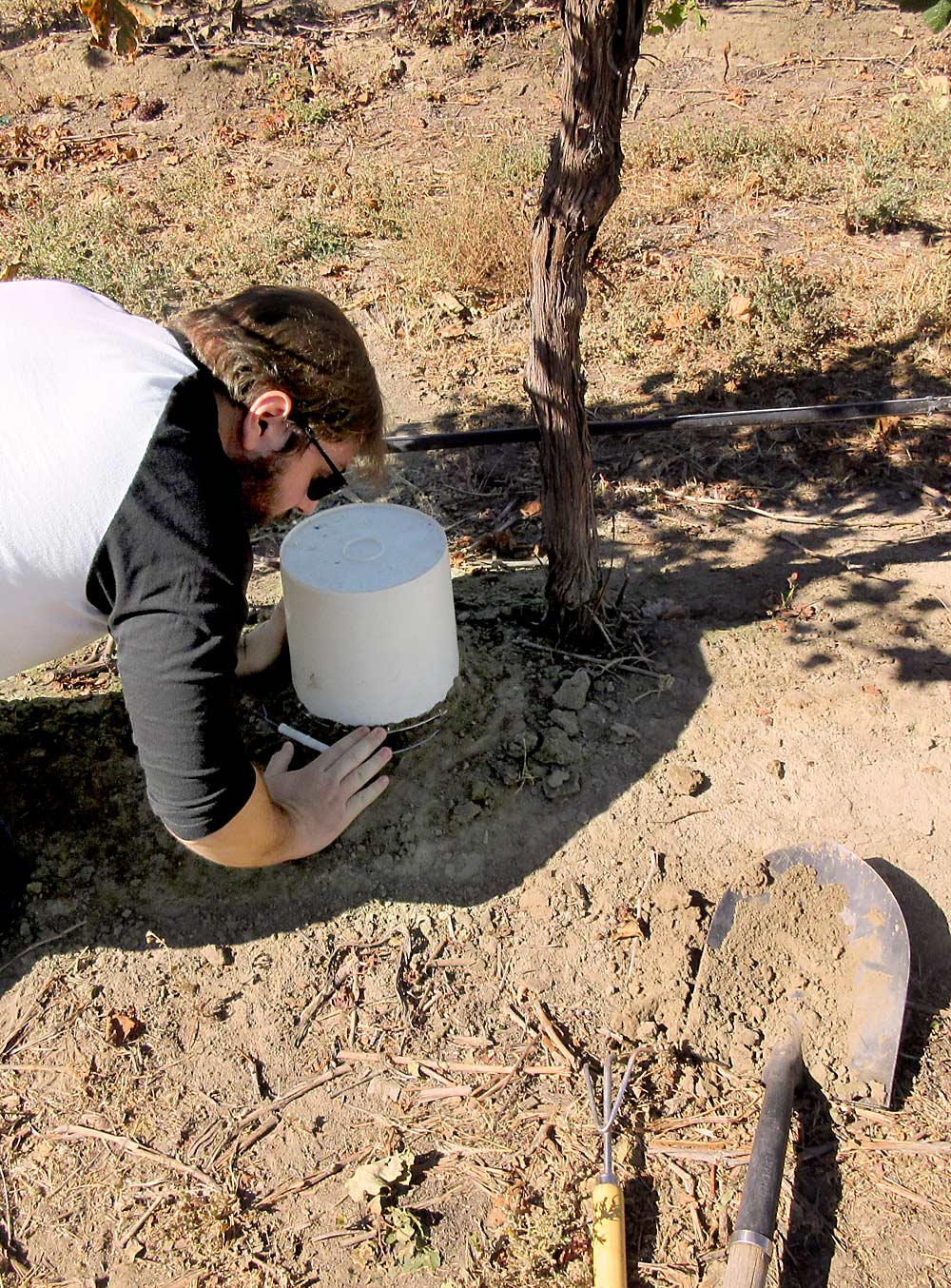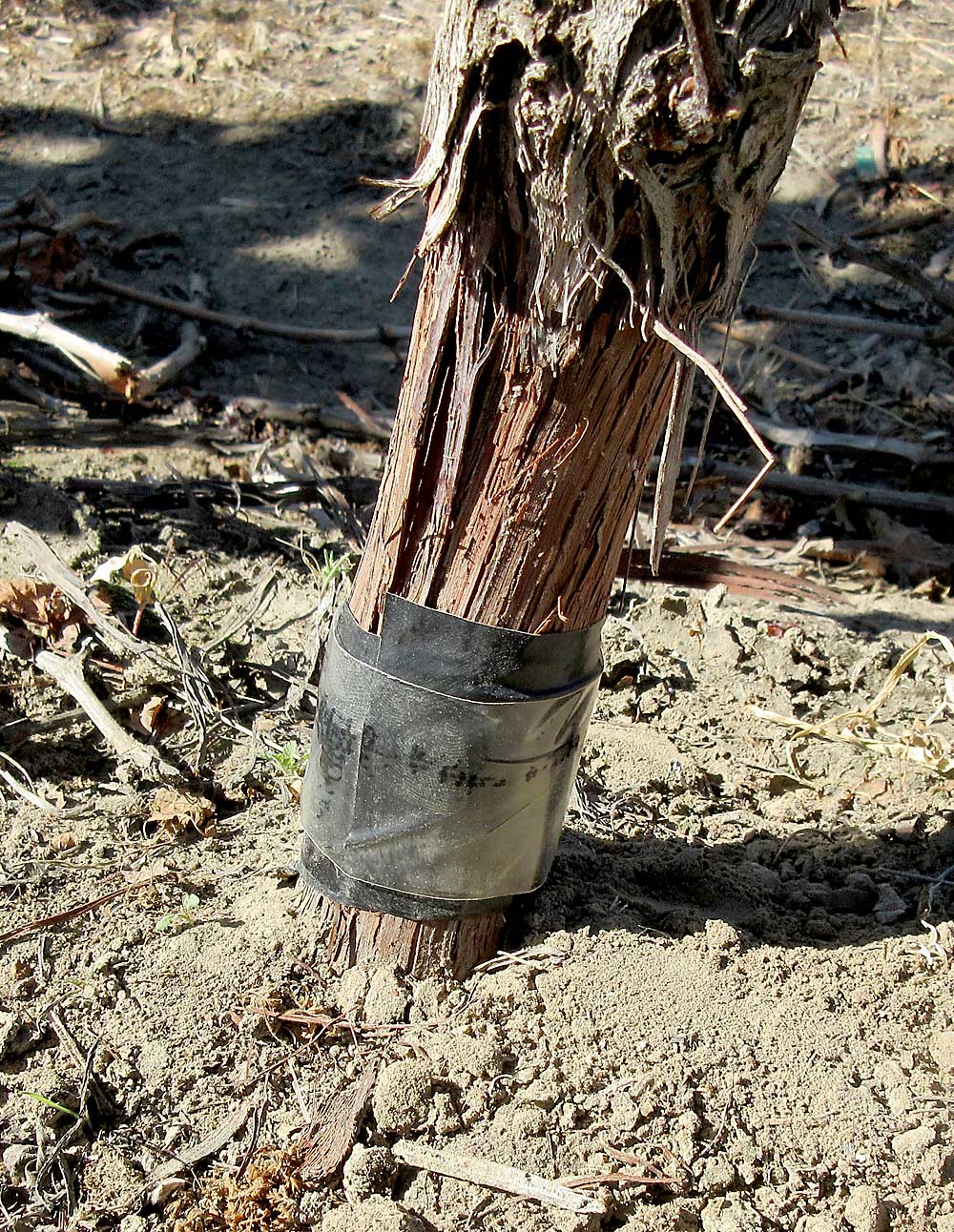
Last year’s increase in the detection of grape phylloxera in several Washington wine growing regions underscores the importance of a strong industry-driven research program. Immediate response from industry organizations and partners provided growers and wineries with vineyard sanitation protocols to prevent spread, but it’s industry-supported research that will help provide intermediary solutions.
Long-term management of phylloxera in Washington state vineyards will include the use of phylloxera-resistant rootstocks. But research plays a key role in studying potential short-term and intermediary solutions that give growers time to develop a planned and measured response if phylloxera is discovered in a vineyard.
Washington wine grape growers and wineries have good reason to better understand phylloxera. Closely related to aphids, these root-feeding insects can cause loss of vine vigor, vine decline and death. Phylloxera root-feeding injury also creates entry points for pathogens that contribute to potential root and vine death. The tiny insects easily move from vineyard to vineyard in bits of soil that clings to equipment, vehicles and even shoes. Phylloxera-infested plant material is also a source of introduction.
Today, vineyards around the world are planted on phylloxera-resistant rootstocks; however, most Washington wine grape vineyards have been planted on their own roots. Growers chose own-roots over rootstocks because it was believed phylloxera wasn’t a problem in the sandy soils where most Washington grapes are produced, and because roots true-to-type are easier and faster to regrow and train up new vines if cold temperatures damage vines.
Research project details
The Washington State Wine Commission’s board of directors approved funding last April for a three-year phylloxera project to begin on July 1. The project, titled “Monitoring and managing grape phylloxera in Washington state vineyards” involves a dynamo team of Washington State University researchers: Doug Walsh, entomologist, is the project’s principal investigator, with Michelle Moyer, extension viticulturist, Markus Keller, viticulture researcher, and Gwen Hoheisel, regional extension specialist, as co-principal investigators. The project has three components: pest biology, management and extension.
The project is designed to determine the scope and severity of the phylloxera infestation in Washington vineyards. Detection methods, both mechanical and molecular, will be evaluated and validated while cultural and chemical management strategies will be studied. A risk-assessment mapping tool will be developed for the industry to provide focus for monitoring and managing potential phylloxera infestations. Specific project objectives include:
—Conduct life cycle studies.
—Quantify the number of generations per year and validate sampling methods.
—Use DNA barcoding to quantify the number of phylloxera introductions and origin of introductions.
—Investigate the influence of soil temperatures (via plastic mulch) on phylloxera biology for nonchemical control.
—Use bioassays to test effectiveness of systemic insecticides.
—Conduct insecticide efficacy trials.
—Develop a risk-assessment mapping tool based on site conditions to help identify areas of high and low risk.
—Use molecular sampling methods for early detection.
—Develop outreach materials for scouting and training.
Phylloxera in the Western U.S. reproduce exclusively by parthenogenesis — mating is not required, and foundress females produce genetic clones. Hence, when a new introduction of phylloxera is discovered, it is possible to use genetic analysis to determine the geographic origin of the population. Walsh hopes to identify if new biotypes have been recently introduced into Washington state or if endemic biotypes are increasing their geographic range. This information will help determine if populations have been here for years or are the result of a break in quarantine regulations in more recent years.
The project also has a strong extension component to develop tools to help growers identify and detect phylloxera in problematic sites. A statewide map is planned that will consider phylloxera biology specific to Washington, soil maps and environmental data to show levels of risk. Similar maps have been created for other invasive species like spotted wing drosophila and spotted lanternfly. Identifying areas of greater risk can help focus scouting efforts and aid in determining the need for replanting with rootstocks. Additionally, the project includes validating molecular biology-based analysis of soil and roots for rapid, early detection of phylloxera infestations.

Initial progress
When Walsh and his collaborators launched the project in July, it was hard to find phylloxera in vineyards in the summer heat. But as the soil temperatures have cooled, phylloxera has been detected in many of the locations showing symptoms of vine decline. (See “Finding phylloxera” on Page 26.)
Preliminary data indicates that in Eastern Washington, phylloxera has two to three generations per year. This information is needed to identify optimum sampling time and validate sampling methods.
For the insecticide efficacy trials, Walsh is studying three systemic insecticides. Two are recommended for phylloxera management by the University of California — Platinum (thiamethoxam) and Movento (spirotetramat) — and the third is an experimental candidate from a chemical manufacturer. Efficacy trials in infected vineyards were initiated to learn if insecticides are effective in slowing the spread. Data will be collected in the coming year.
The pandemic has delayed work on some of the objectives, such as the DNA bar coding. However, Walsh is stockpiling samples for later DNA extraction work.
Walsh said that although scientists have studied phylloxera for more than 100 years, there’s a surprising dearth of data. “It’s like most gave up and switched to rootstocks,” he said. “In the long run, I think some Washington vineyards will be able to coexist with phylloxera here and it won’t devastate or wipe out the industry as it did in some regions.”
He’s cautiously optimistic that some regions will be able to stay on their own roots, while others will need to transition to rootstocks.
Thus far, because the symptoms of vine decline appear to be moving slowly in Washington vineyards, scientists believe there is time to study several intermediary solutions and develop best management practices. Research will equip growers with information to help decide when, or if, transition to rootstocks is needed, and where. It’s possible some locations may not need to replant due to phylloxera. •
—by Melissa Hansen






Thank you for the information. This is a subject that I am sure many growers are very interested in. We at Discovery Vineyard always respect and appreciate your good efforts to bring this industry along through science and discovery.
Thanks again,
Your friend in the vineyard,
Milo May